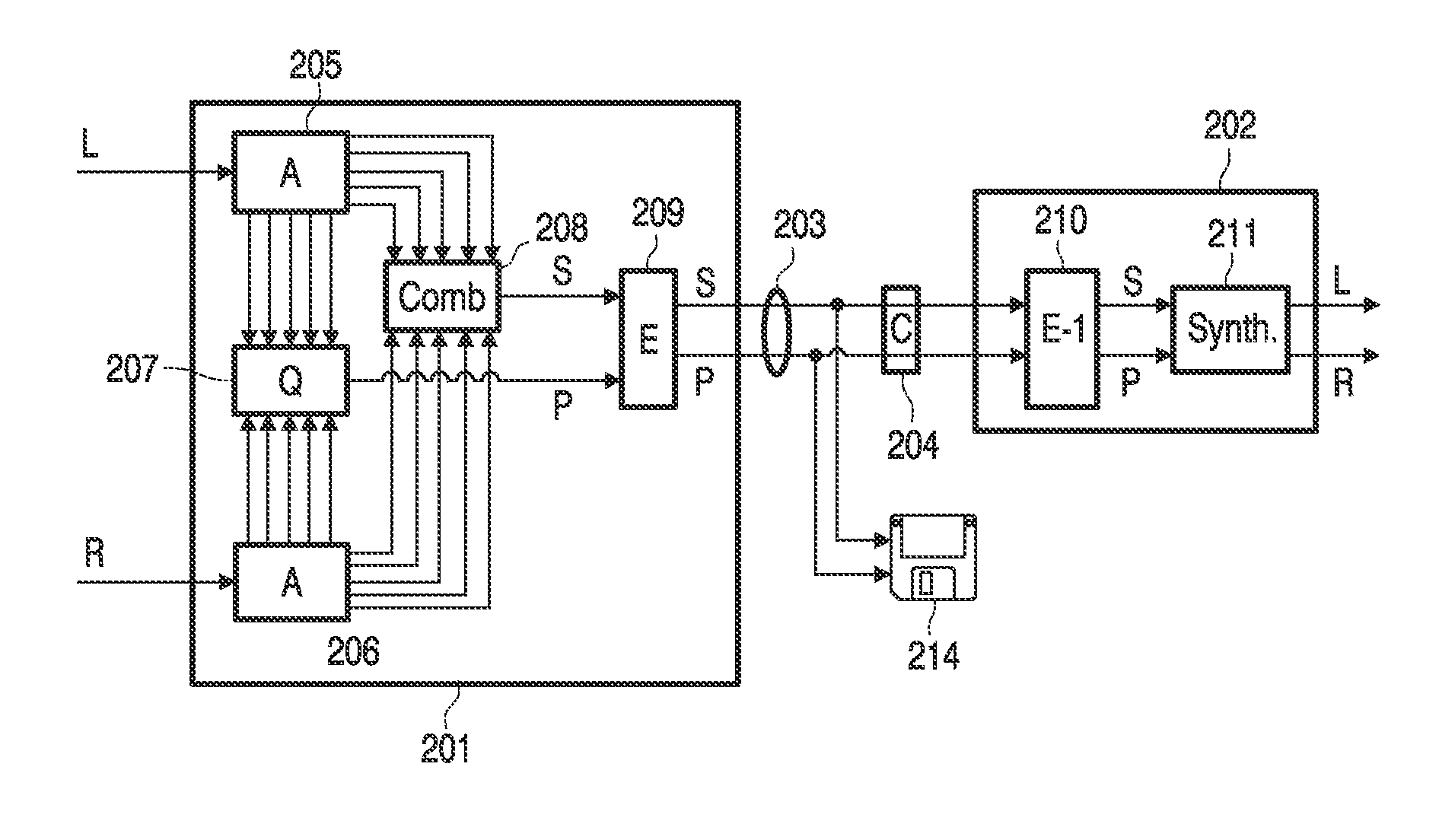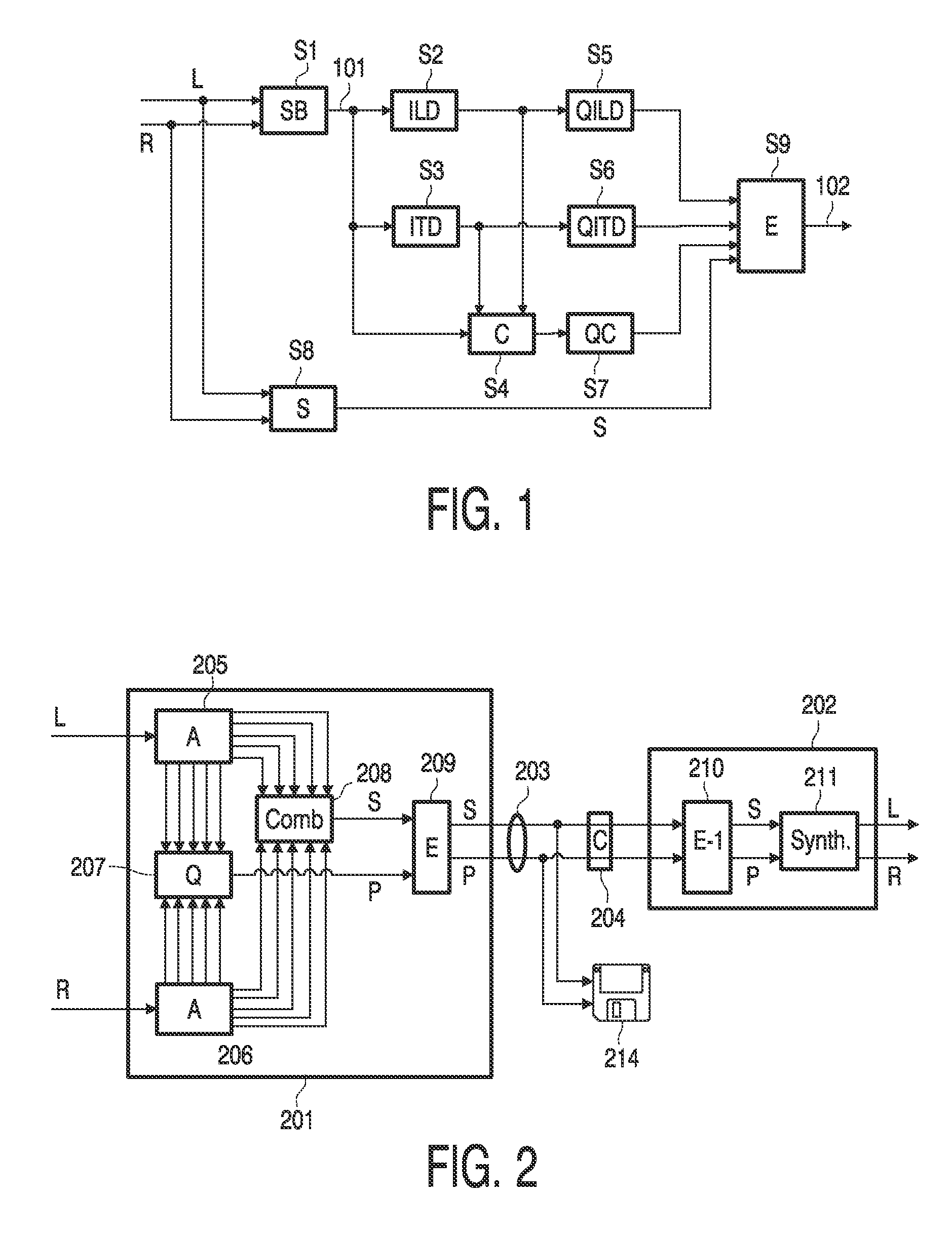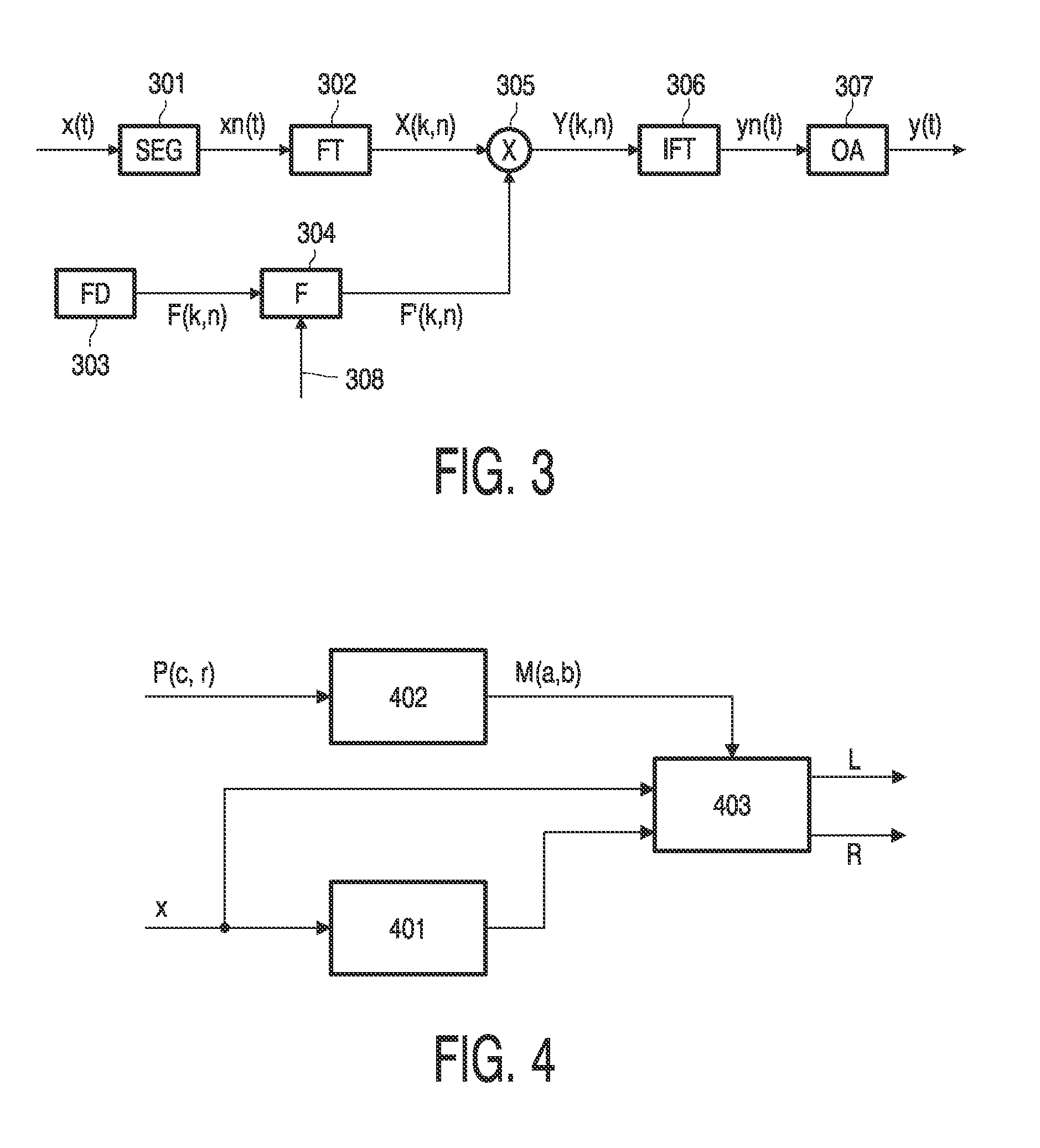Spatial audio
a technology of spatial audio and audio signals, applied in the field of spatial audio, can solve the problems of perception of single auditory objects, and achieve the effects of reducing transmission capacity, high perceptual quality, and efficient coding
- Summary
- Abstract
- Description
- Claims
- Application Information
AI Technical Summary
Benefits of technology
Problems solved by technology
Method used
Image
Examples
Embodiment Construction
[0084]FIG. 1 shows a flow diagram of a method of encoding an audio signal according to an embodiment of the invention.
[0085]In an initial step S1, the incoming signals L and R are split up in band-pass signals (preferably with a bandwidth which increases with frequency), indicated by reference numeral 101, such that their parameters can be analyzed as a function of time. One possible method for time / frequency slicing is to use time-windowing followed by a transform operation, but also time-continuous methods could be used (e.g., filterbanks). The time and frequency resolution of this process is preferably adapted to the signal; for transient signals a fine time resolution (in the order of a few milliseconds) and a coarse frequency resolution is preferred, while for non-transient signals a finer frequency resolution and a coarser time resolution (in the order of tens of milliseconds) is preferred. Subsequently, in step S2, the level difference (ILD) of corresponding subband signals i...
PUM
 Login to View More
Login to View More Abstract
Description
Claims
Application Information
 Login to View More
Login to View More - R&D
- Intellectual Property
- Life Sciences
- Materials
- Tech Scout
- Unparalleled Data Quality
- Higher Quality Content
- 60% Fewer Hallucinations
Browse by: Latest US Patents, China's latest patents, Technical Efficacy Thesaurus, Application Domain, Technology Topic, Popular Technical Reports.
© 2025 PatSnap. All rights reserved.Legal|Privacy policy|Modern Slavery Act Transparency Statement|Sitemap|About US| Contact US: help@patsnap.com



